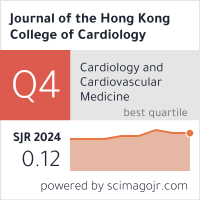Abstract
Introduction: Atrial flutter and fibrillation (AFL/AF) are frequently induced in patients with atrioventricular nodal reentrant tachycardia (AVNRT), however, its mechanism is uncertain. The purpose of this study was to determine characteristics of effective refractory periods in the right atrium (RA) in patients with AVNRT. Methods and Results: In 26 patients with typical AVNRT (21 female, mean 46-year-old), AFL/AF was induced in 9 (35%) patients during an electrophysiologic study before slow pathway (SP) ablation. The atrial effective refractory periods (A-ERP) were measured at the high, mid and low lateral wall in the RA, the high and mid RA septum, and the SP region. Dispersion in the A-ERP (the longest − shortest; ERPD) was also calculated. The data was compared with 28 patients with intra- or infra-nodal atrioventricular block (AVB) and 32 patients with sinus node dysfunction (SND). The mean A-ERP was from 196 to 220 msec excepting at the SP region. The A-ERP at the SP region was significantly longer comparing with those at the other sites (mean 242 msec, p < 0.05). Similar tendency was found in patients with SND, not in patients with AVB. The ERPD was significantly greater than that in patients with AVB (mean 72 versus 45 msec, respectively, p < 0.05) while it was similar to that in patients with SND (mean 78 msec). Conclusion: In patients with AVNRT, the A-ERP in the SP region was relatively prolonged and the ERPD was wide as in patients with SND. These atrial electrophysiologic abnormalities might be potentially arrythmogenesis for atrial tachyarrythmias other than AVNRT.
Recommended Citation
Takashi Tokano, Yuji Nakazato, Kaoru Komatsu, Takeshi Suzuki, Effective Refractory Periods in the Right Atrium in Patients with Atrioventricular Nodal Reentrant Tachycardia Journal of the Hong Kong College of Cardiology 2012;20(2) https://doi.org/10.55503/2790-6744.1045
Creative Commons License

This work is licensed under a Creative Commons Attribution-Noncommercial-No Derivative Works 4.0 License.



